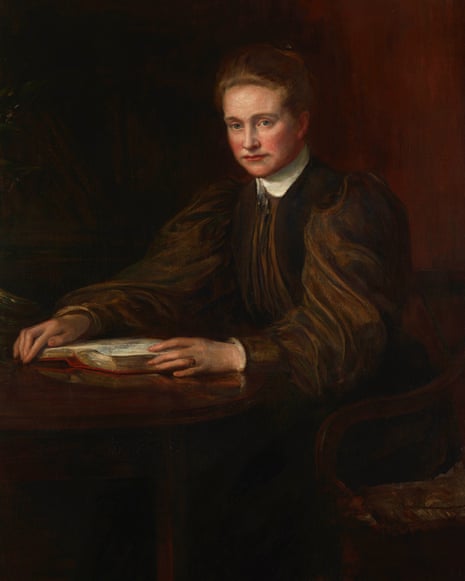A Victorian painting of a studious young woman working at her desk has emerged as a lost portrait of one of the most important figures in the British women’s rights movement history, the suffragist Millicent Fawcett.
The artwork in the collection of Royal Holloway, University of London, has long been identified as a depiction of another pioneer, but far less well-known figure, Dame Emily Penrose. There is even a plaque on its frame saying it is Penrose.
But research by Imogen Tedbury, formerly part of Royal Holloway’s art collections team, has revealed it to be Fawcett, who led the National Union of Women’s Suffrage Societies from 1897 to 1919.
Tedbury was researching portraits in the college’s collection when she noticed a signature on the painting, which turned out to be of the artist Theodore Blake Wirgman.
That set Tedbury on a hunt to find out more, resulting in the discovery in the archives of a reference to a gift made by Wirgman of a Fawcett portrait.
“That was such a day, it was extremely exciting to get that email,” Tedbury said. “I mean, what a find. Normally when you have an obscure painting and you work out the sitter is someone else … it is not normally Millicent Fawcett!”
The painting came to the Royal Holloway in 1985 when it merged with Bedford College, the first women’s college in the UK. It was assumed to be a portrait of Penrose, the inaugural principal of Bedford and later a principal of Royal Holloway.
Tedbury said the portrait spoke to the history of both colleges and their importance of as bastions of early women’s education.
Most depictions of Fawcett, including the Gillian Wearing statue installed in Parliament Square in 2018, show her as a campaigner or speaker. In the lost portrait she is depicted as a scholar.
“This painting suggests a more introspective, studious side to her character,” Tedbury said. “She looks up as if asking why we have interrupted her work – it’s an expression we can all relate to, particularly now, when many of us are working from home.”
Tedbury, who now works at the National Gallery, said the portrait was likely to have been a commission by Dorothea Roberts, an Irish suffragist and close friend of Fawcett’s.
How it became known as Penrose is unknown. “It would have been logical to assume it was Emily Penrose if you saw it hanging alongside other early college principles. It also doesn’t look unlike Emily Penrose,” Tedbury said.
Plans for the future of the portrait are on hold because of the lockdown. Tedbury’s research will be published later in the year.
